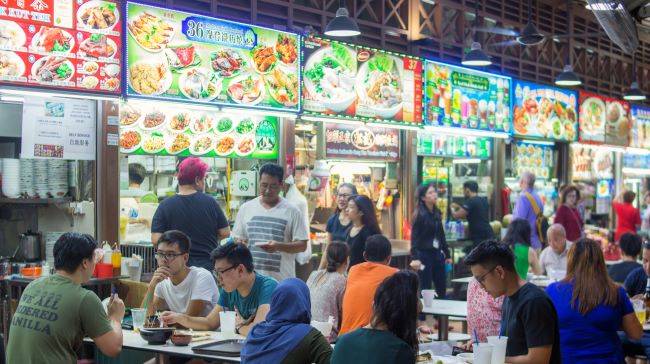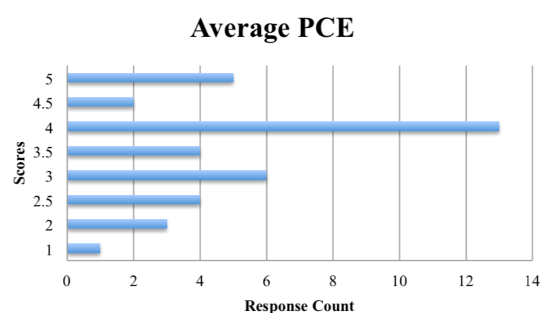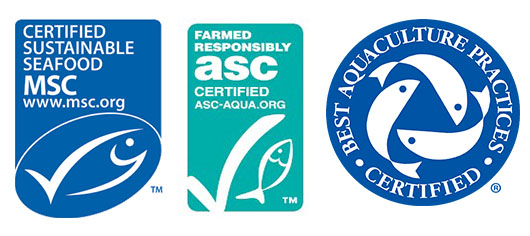The essential guide to consuming sustainable seafood in Singapore
By ASE final year student Go Li Jia, who recently completed her FYP titled ‘Sustainable Seafood Consumption Among Consumers and Corporates in Singapore’.

Think chili crab, sambal stingray and cereal prawns – it is no surprise that Singaporeans love our seafood. On average, each Singaporean consumes approximately 22kg of seafood per year, above the global average of 20kg (Lin, 2016). But did you know that 75% of the seafood consumed in the country does not come from sustainable sources (World Wide Fund for Nature, 2016)? This means that they are overfished or originate from poorly managed aquaculture farms, and tend to be associated with multiple environmental tradeoffs including eutrophication and the spread of invasive species and diseases (Pauly et al., 2002; Rist et al., 2014; Troell et al., 2013).
With over 90% of global fish stocks at risk of being over-exploited as well as the host of environmental problems associated with aquaculture, one might wonder whether consuming seafood can truly be sustainable. Thankfully, environmentally sustainable methods of fishing and farming exist, and if managed responsibly, fish stocks and habitats can still recover. For my FYP I , conducted a survey of 38 Singaporeans and found that more than half of the respondents had generally high perceived consumer efficiency (PCE) scores (≥4), which means that most respondents believed purchasing sustainable seafood can contribute to better seafood production practices.

Figure 1. Response count for average PCE scores given by respondents.
Indeed, as a consumer, making environmentally responsible seafood choices can help to protect our seafood as well as the communities that support it. Here are two simple ways to do so:
- Ask about where your seafood is caught or farmed
- Fishing methods and the management of aquaculture farms differ from region to region, and where your seafood is caught or farmed can determine how sustainable your seafood is.
- Use the WWF Singapore Seafood Guide to make the right choice.
- Look for eco-labelled products
- Internationally recognised seafood certification schemes provide relevant information about the sustainability of the product at the point of purchase.
- Some common labels to look out for in Singapore include the Marine Stewardship Council (MSC), Aquaculture Stewardship Council (ASC), and Best Aquaculture Practices (BAP) labels shown below:

Figure 2. Common eco-labels found in Singapore
By choosing sustainable seafood, you can play a part in ensuring the availability of fish stocks and the health of our oceans for generations to come.
The personal belief and estimate of the consumer’s ability to contribute to better production practices by choosing a more sustainable product (Berger & Corbin, 1992; Roberts, 1996;Vermeir & Verbeke, 2008)
The WWF Singapore Seafood Guide categorises popular seafood species consumed in Singapore into 3 categories: (1) seafood that is recommended for frequent consumption; (2) occasional consumption and (3) seafood that should be avoided.
References
Lin, M. (2016, October 4). 3 out of 4 popular fish species eaten here environmentally unsustainable: WWF-Singapore. The Straits Times.
Pauly, D., Christensen, V., Guénette, S., Pitcher, T. J., Sumaila, U. R., Walters, C. J., … Zeller, D. (2002). Towards sustainability in world fisheries. Nature. https://doi.org/10.1038/nature01017
Rist, L., Felton, A., Nyström, M., Troell, M., Sponseller, R. A., Bengtsson, J., … Moen, J. (2014). Applying resilience thinking to production ecosystems. Ecosphere. https://doi.org/10.1890/ES13-00330.1
Troell, M., Kautsky, N., Beveridge, M., Henriksson, P., Primavera, J., Rönnbäck, P., & Folke, C. (2013). Aquaculture. In S. A. Levin (Ed.), Encyclopedia of Biodiversity (2nd Editio, pp. 189–201). Waltham: Academic Press.
World Wide Fund for Nature. (2016). 75% of popular seafood in Singapore not responsibly caught. Retrieved October 1, 2019, from https://www.wwf.sg/?279952/WWF-Singapore-launches-New-Seafood-Guide














/enri-thumbnails/careeropportunities1f0caf1c-a12d-479c-be7c-3c04e085c617.tmb-mega-menu.jpg?Culture=en&sfvrsn=d7261e3b_1)

/cradle-thumbnails/research-capabilities1516d0ba63aa44f0b4ee77a8c05263b2.tmb-mega-menu.jpg?Culture=en&sfvrsn=1bc94f8_1)

7e6fdc03-9018-4d08-9a98-8a21acbc37ba.tmb-mega-menu.jpg?Culture=en&sfvrsn=7deaf618_1)
